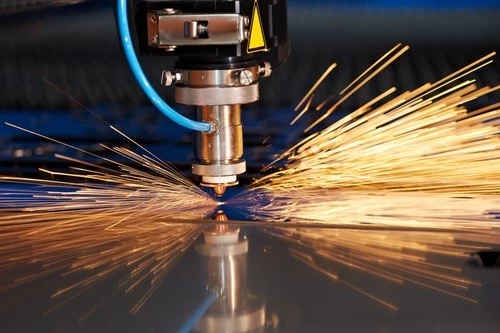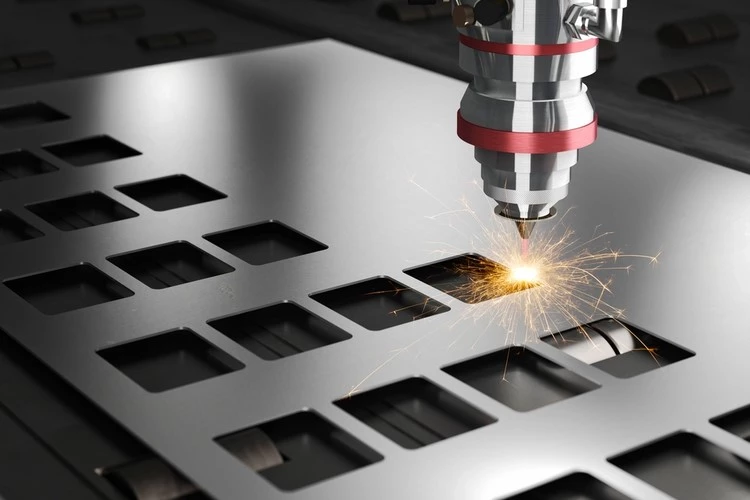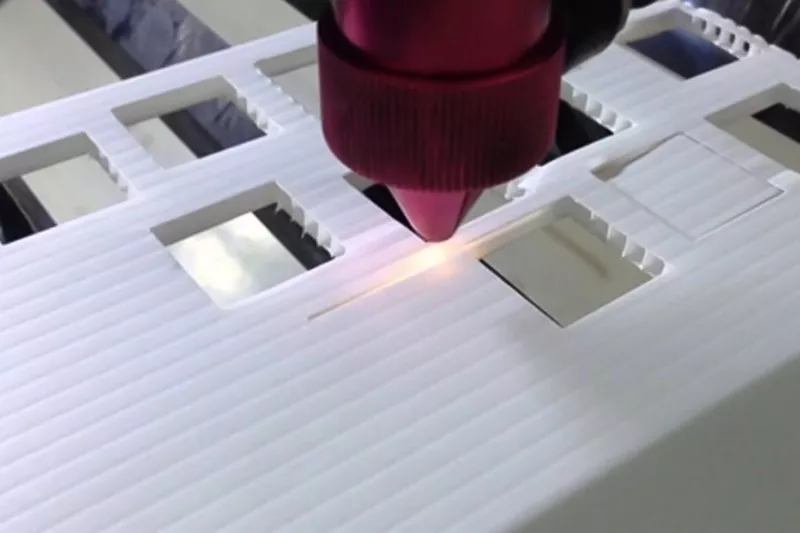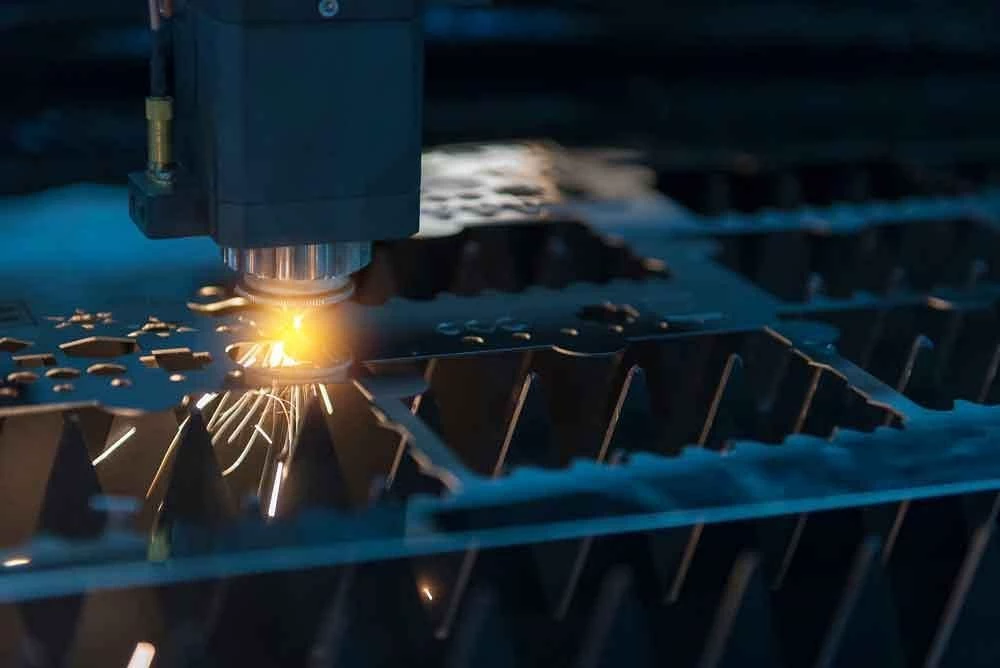Laser cutting is an important part of sheet metal fabrication, where it is employed in cutting many materials. This makes it an important process in rapid prototyping. It is versatile due to its compatibility with different materials and several advantages of high precision. However, even though we have many laser cutting materials, there is also a limit to the materials laser cutters can cut.

Therefore, to understand the process, this article will introduce materials used for laser cutting. It will show the different materials suitable for laser cutting and those unsuitable. By the end of the article, you will know the answer to what materials can a laser cut. Read on to further explore the possibilities.
Different Types of Laser Cutting Materials
Laser cutting’s versatility is a result of the many materials supported by the operation. As a result of this, there is a lot of confusion in selecting the right one. Therefore, we will carefully explain the types of materials for the laser cutting techniques below.
Metals

Metals are the most common materials used for laser cutting. This is due to properties such as durability, strength, and customizability. Generally, laser cutting works with all metals. However, properties such as thickness and reflective properties affect the feasibility of the cutting process.
Metals with high thicknesses will require very powerful laser cutting. Also, the reflective property is a factor that limits laser cutting. Therefore, metallic laser cutting materials with reflective properties are more difficult to cut in sheet metal fabrication.
Plastics

Plastics are also common materials laser cutters can cut, and they have many industrial applications. They are the right materials for making signs, jewelry, and wall. Examples of plastic materials used for laser cutting are acrylic, PMMA, POM, and Lucite. Plastic materials used for laser cutting are important parts of making gears, medical instruments, and food packaging. Other plastics that you can cut with the process are:
- Delrin (POM, acetal)
- Mylar (polyester)
- PETG (polyethylene terephthalate glycol)
- Polyethylene (PE)
- Polypropylene (PP)
- Styrene
Not all plastic is ideal for laser cutting. Some can melt or burn, which renders the operation ineffective. Later we will discuss the materials that should be avoided in the laser cutting process.
Others
Metals and plastics are not the only material you can laser cut. Below are other categories of laser cutting materials you can use in your project.
- Woods
Wood is the best laser cutting material for those that are new to the process. Laser cutting works with all types of wood. However, the thickness is also an important factor to note.
Common types of woods used in laser cutting are Plywood, bamboo, and MDF (medium-density fiberboard). They are ideal because their thickness can be regulated, and they are cheap. These make them ideal for practicing before going for expensive wood materials.
- Paper
You will be familiar with many laser-cut products made from paper. A popular example is those invitations with cut-edge designs. They are cheaper than most laser cutting materials and easy to cut. They are also environmentally friendly, i.e., it is recyclable and biodegradable.
- Foams
Foams are used in making home products and packaging materials. While they may not be as popular as other laser cutting materials, they are a good option to try out. You can use popular foam materials such as Depron foam, EPM, Gator foam, and Polyester (PES).
- Textiles
Textiles are new materials used for laser cutting. Laser cutting is applicable in textiles in digital embroidery. You can use the operation on types of textiles such as leather, nylon, polyester, silk, etc.
Materials to Avoid in Laser Cutting
Laser cutters can cut through anything. However, there is a limitation on the types of material they can cut. Limitations are majorly due to the type of materials and their properties. Below are the materials you should avoid in laser cutting.
PVC
You should not laser cut materials made with Polyvinyl chloride. This is because it will lead to the emission of toxic fumes of chlorine. This will be a source of danger to the operator and machine. Also, laser cutters can be a source of corrosion. Generally, you should not cut materials containing chlorine with lasers. Instead of using laser cutting, use mechanical cutting methods.
Glass
Glass materials are not ideal for laser cutting because of their two properties: fragility and reflectivity. This does not mean the laser does not cut glass. However, there is a huge strain on the laser cutter when laser cutting reflective material, and it requires operational experience.
The laser cutter must have a huge power ratio and a cooling system. The operator must have total control over how the machine works. For example, the operator should control the fracture’s stepwise direction, which will improve the finish.
Polycarbonate
Laser cutting Polycarbonate can lead to patches of discoloration that occurs during the process. However, this depends on the thickness of the Polycarbonate.
With thin (under 1 mm) polycarbonate, you might not experience much discoloration. However, laser cutting thick Polycarbonate is not ideal. The thickness encourages the absorption of infrared radiation, which leads to discoloration and burning.
ABS and HDPE
Normally, lasers emit a huge amount of heat, which is enough to vaporize many materials. However, ABS and HDPE, it is different. Instead of vaporizing, they melt. This leaves a messy working table with bad quality.
Polystyrene and Polypropylene Foam
Both laser cutting materials catch fire very easily.
Fiberglass
Anything with the glass entity is not ideal for laser cutting. This is because of the reflective properties. Fiberglass also belongs to the same category.
The material is made up of glass and epoxy resin. The epoxy resin will lead to the emission of toxic fumes, making it inappropriate.
Laser Cutting Materials in Rapid Prototyping and Custom Production
Laser cutting is an important part of rapid prototyping and custom production because of its many advantages. It is applicable in making plastic and metal parts because of its advantages, such as precision and quality assurance.
To enjoy laser cutting operations, you have to understand the different laser cutting materials available in the market. This is what the article introduced. However, that is not all. Getting the best product that brings what you have in your mind to reality is better by outsourcing to a reliable and professional service provider. By doing that, you put all the processes needed in the hands of such a service provider. If you love the sound of that, RapidDirect laser cutting service is the best for you.
RapidDirect Laser Cutting Service

Have you been exposed to low precision cut products with a lack of quality attributes? Do you need the best in the business in terms of laser cutting? By choosing us at RapidDirect, you have placed your assignments in reliable hands and experienced minds.
In RapidDirect, laser cutting is an important operation we utilize in rapid prototyping and custom production for quality cutting processes. With our experience, you have a guarantee of getting the best.
You do not need to worry about the type of material you are bringing. At RapidDirect, we support many materials. For example, carbon, stainless steel, aluminum, etc. Our cutting process is also highly accurate and can cut dissimilar thicknesses at the same time.
We also have reputable experts that can answer your questions and give you suggestions. All these you get at a very low price and faster lead time.
Conclusion
Using the best laser cutting material is not based on the price but on a proper understanding of the process. In a bid to understand laser cutting, this article introduces many laser cutting materials. It also discussed the materials suitable for laser cutting and those not suitable. We believe that you’ve learned one or more things about sheet metals. You can trust us at RapidDirect for the best laser cutting services
FAQ
There are many materials suitable for laser cutting. Of the many materials, the prominent ones are metals and some plastics. However, depending on the operator’s level of expertise and the products required, there are other materials. These are woods, paper, cardboard, foam, and textiles
Many materials should not be cut with a laser. This can be due to the properties or components of the materials. A top example of such materials is PVC, ABD, and HDPE. PVC leads to the emission of toxic fumes of chlorine gas, ABS and HDPE melts and catches fire.
Laser cutting is a technology ideal for many industrial processes due to its many advantages. Of the many advantages, the most important is the high precision cut, ability to give complex cuts, speed, and lower energy requirement.


